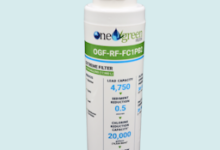How Does Quality of Feed Impact the Health of an Animal?

Regardless of whether you are a farmer or a dairy producer, you know that the quality of feed that you use to feed your animals has a big impact on the health of your herd. It can also affect the quality of the milk and cheese that you produce. The experts at David Woods Hay Service cover the details below.
Dioxin contamination
During the past few decades, there have been several outbreaks of dioxin contamination of animal feed. This has led to greater awareness of the impact of feeding practices on animal health and welfare.
There are two main routes through which DLCs enter the food chain. The first is direct, through air or soil to the animal or fish. The second is indirect, through plants or water sediments.
In Europe, the levels of PCB and PCDD/F in foods are regulated. Commission Regulations (EC) 1881/2006 and Commission Directive 2006/13/EC apply. In addition, the Codex Alimentarius Commission has adopted a Code of Practice for the reduction of dioxin-like PCB contamination in foods.
Dioxins and PCBs are produced in many ways, including waste incineration, iron ore sintering, forest fires, and burning biomass fuels. They can be found in a wide range of products, including foodstuffs. They are particularly toxic to aquatic organisms, such as fish and shellfish. However, they can also occur in fresh herbs, cereals, and fruit.
The human exposure to dioxins varies from population to population, and from age group to age group. The average exposure ranges from 4.3 to 25.7 ng/kg bw per day. In order to achieve effective control, sampling and surveillance methods must be applied effectively. Efforts must also be made to reduce the background exposure of consumers.
Although the effects of chronic exposure to dioxins on the body’s endocrine system, reproductive system, and developmental systems are not fully understood, some studies suggest that these compounds can have negative consequences.
PCB contamination
Having a good knowledge of how quality of feed impacts the health of an animal is vital. There have been incidents involving PCB contamination of meat and eggs in the past decade. These include the Irish pork scandal, a citrus pellet case from Brazil and a biodiesel incident in Germany. These incidents highlight the need for ongoing monitoring and control of current pollution.
In Germany, a long-term soil study showed that PCDD/F levels in soils treated with sewage sludge were on average eight to twelve times higher than background soils. However, there were still some areas where PCDD/F levels were six to ten times higher than background levels.
In Michalovce, Slovakia, the human exposure was also high. The human exposure in the area was higher than the PCDD/F concentrations in the soil. The PCDD/F and PCB concentrations in suckled calves were twice as high as the PCB concentrations in beef cattle.
The levels in grassland topsoil were about ten to twenty below the critical level. Nevertheless, the total daily intake of dl-PCBs exceeded the EU maximum permitted level.
The German Environment Agency initiated a project to investigate the entry of PCDD/Fs into food. This project aimed to determine the critical daily dioxin intake for each species. In addition, the project developed exposure assessments for other food-producing animals.
The results showed that the most sensitive exposure pathway is the relationship between soil and chicken eggs. The dl-PCB content in chicken eggs was the main contributor to PCDD/Fs in the eggs.
Salmonella contamination
Several types of animals are naturally infected with Salmonella. These include rodents, birds, and mammals. These animals can be infected through direct contact with feeder rodents, or from contaminated food, manure, or the environment.
Animals can shed Salmonella for long periods of time. Both clinically sick and healthy animals shed large quantities of the bacterium. This can be a health hazard to humans.
Although the majority of human Salmonella cases are foodborne, animal contacts also pose a risk. There are certain subpopulations of people at a higher risk of infection, including infants and very old people. These people are more likely to suffer from severe illnesses and to have impaired immune systems.
In order to reduce the risk to human health, a Hazard Analysis and Critical Control Point program should be implemented for the animal feed industry. This program should also be integrated with the human foodborne disease surveillance system. This would allow a more structured survey of the risks associated with Salmonella contamination of animal feed, which is essential to help inform the debate about its efficacy.
To minimize the risk to human health, it is important to implement good hygiene practices. This includes keeping soiled barn clothes out of the house. It is also important to consume only pasteurized milk. This will minimize the chances of cross-contamination.
The risk of Salmonella infection in cattle varies with the serotype involved and the age of the animal. The most common strains are groups E, B, and D.
Fusarium spores
Among the most important fungi to affect animals are Fusarium species. These fungi produce a variety of toxins, including trichothecenes, that have a direct effect on the intestines and cause rapid irritation.
Toxin production by fusarium can result in digestive disorders that reduce feed intake and production. These diseases can also disrupt the normal reproductive cycle.
There are several species of Fusarium, which differ in their spore production, arthropod dispersal, and mode of infection. Each species induces a different level of visible symptoms. In the case of alimentary toxic aleukia, the pathogen causes diarrhea, abdominal pain, vomiting, and pharyngeal ulceration.
Besides causing gastrointestinal disease, Fusarium also produces toxins that can cause respiratory allergies. Infected cattle may develop interstitial pneumonia.
Fusarium species are widespread in the soil. They are also found in grain crops, where they can cause scab or head blight. They produce a variety of toxins, including HT-2 and zearalenone toxins.
Toxin production by Fusarium is a major problem worldwide. Among the most common are the HT-2 toxin producing species Fusarium sporotrichioides, Fusarium avenaceum, and Fusarium langsethiae. In colder maritime climates, HT-2 toxin producing species are more prevalent. In addition to causing scab or head blight, they can produce a variety of toxins that disrupt reproduction and cause grain quality loss.
The most commonly detected Fusarium mycotoxin is deoxynivalenol. It is a sesquiterpenoid secondary metabolite that acts on ribosomes to inhibit protein synthesis.
Infectious prions
Several prion diseases can be acquired by humans and animals. They are transmissible neurodegenerative conditions and can cause a neurodegenerative disease in humans, known as variant Creutzfeldt-Jakob disease (vCJD). In addition, they are a major cause of death in livestock.
Infective prions have been found in meat and bone meal, an ingredient of livestock feeds for more than a century. Although the risk of foodborne prion diseases is still significant, strict regulation of feeds has helped keep the problem under control.
The occurrence of prion diseases is caused by an accumulation of misfolded conformers of the cellular prion protein, usually designated as PrPSc. Abnormal prions are resistant to heat and are present in contaminated meat and meat products.
Infections of animals can occur naturally or through the direct inoculation of infected material. Prion diseases are sporadic, and 90% of the known cases are from direct inoculation. The majority of sporadic prion diseases in humans are caused by inherited mutations in the gene that encodes the prion protein. Infections can also be induced by contamination of human tissue, brain surgery, or medical procedures.
Bovine spongiform encephalopathy, commonly referred to as mad cow disease, is a progressive neurodegeneration of cattle. It is associated with a buildup of misfolded conformers of host-encoded cellular prion protein. The resulting domino-like effect on neighboring proteins causes neurodegenerative disease. The infectious agent is present in the brain tissues of BSE infected animals. It may also be detected in the peripheral nerves and retina.
Effects of distillers grains on milk and cheese
Using distillers grains as a dietary supplement has garnered attention in recent years. As a result, several studies have sought to determine the effects of DDGS on various milk and cheese quality markers.
The best part is that DDGS is a relatively inexpensive protein source. Aside from its obvious uses, the grain can also serve as a substitute for soybean meal. In fact, a recent study conducted at a Midwestern dairy farm suggests that DDGS may have some merit in the milk-making process.
In addition to providing a convenient and inexpensive source of protein, DDGS is known to serve as an energy booster. This is not surprising when you consider that it was derived from a different source than corn. Another benefit of DDGS is that it can replace canola cake or soybean meal.
As a result of the increasing use of DDGS, some dairy farmers have expressed concerns about the quality of their milk and the resulting cheese. In order to help these farmers make informed decisions, researchers at Iowa State University recently conducted a multi-study that aims to uncover the hidden secrets of DDGS. The results of the study indicate that DDGS can have a positive impact on both milk and cheese quality.
The best part is that DDGS can be fed to lactating dairy cows as part of their daily ration. In fact, a recent study conducted by Tedeschi and Beitz at the annual ADSA/ASAS meeting suggested that a total mixed ration containing DDGS results in a small but measurable improvement in milk yield, while not affecting milk fat or milk sugar levels.












